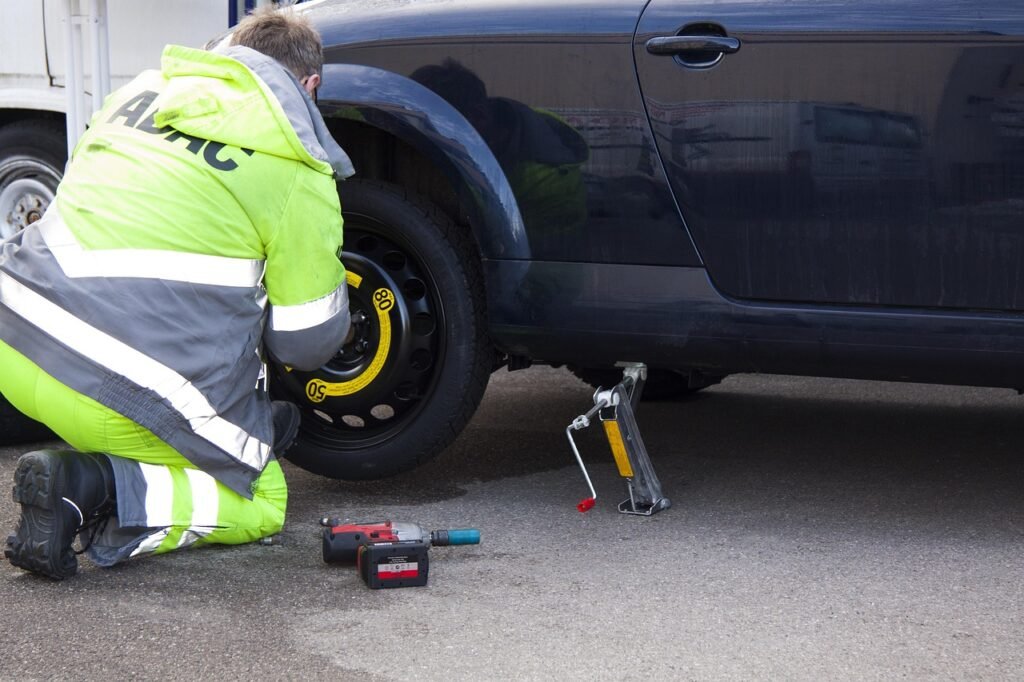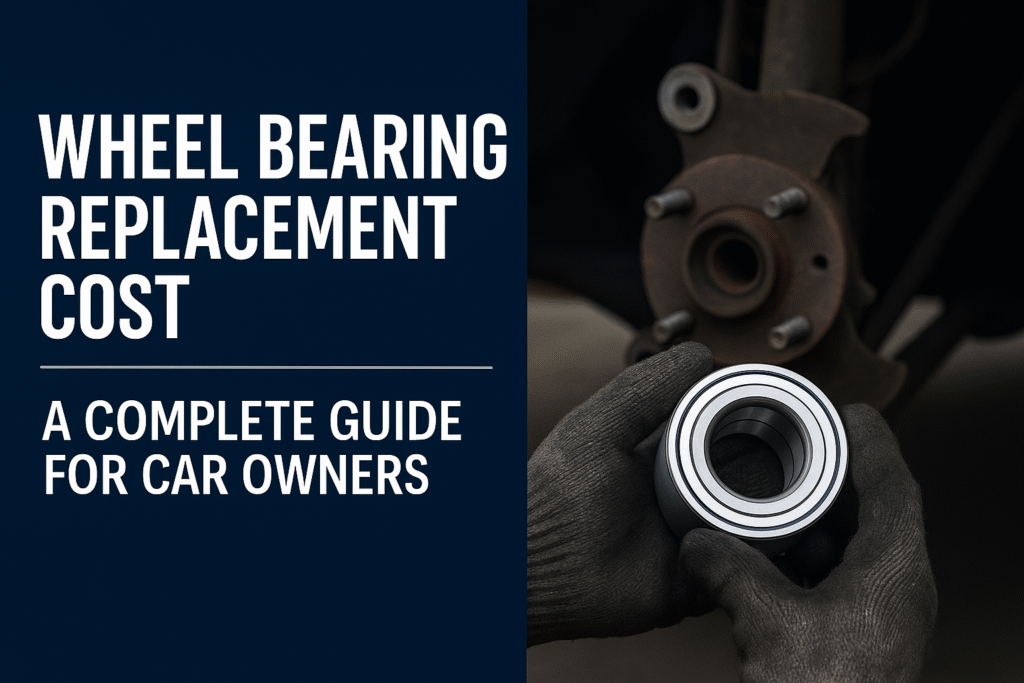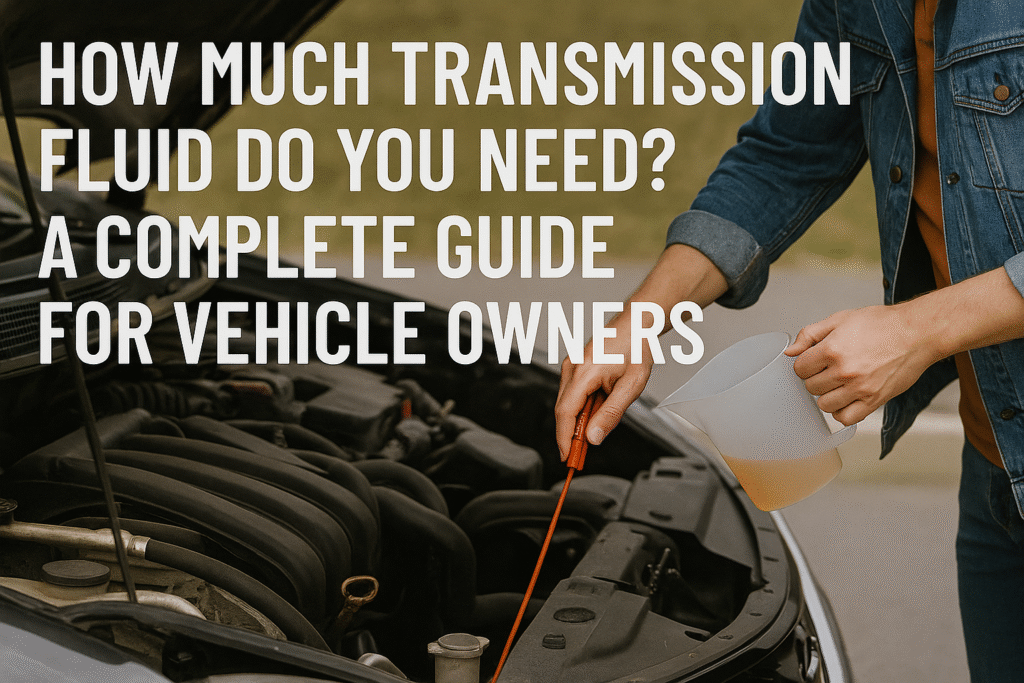Finding a nail in your tire is an unfortunate but common issue that can leave you stressed and uncertain about what steps to take next. A small object like a nail can cause significant tire damage, leading to safety concerns, inconvenience, and costly repairs if not addressed properly.
In this guide, we’ll walk you through the common symptoms of a nail in your tire, explain how to diagnose the issue, and provide practical solutions to safely handle the situation. We’ll also cover preventative measures to reduce the chances of future tire damage.
“A flat tyre doesn’t stop the journey — it just reminds you to slow down, fix what’s broken, and keep rolling.”
What Is a Fuel Pump and Why Is It Important?
A nail in your tire typically causes a puncture that can result in a slow or rapid loss of air pressure, depending on the size and location of the damage. When a sharp object like a nail penetrates the tire, it creates an opening that allows air to escape. If the nail is lodged in the tread, the issue might be manageable. However, a puncture near the tire’s sidewall can be more complicated, and you may need to replace the tire.
How a Nail Affects Your Tire?
When a nail penetrates the tire, it may cause a gradual loss of pressure or lead to a complete flat tire if the puncture is large or if the nail dislodges. In some cases, the nail could also damage the tire’s internal structure, which can compromise the tire’s integrity.
Top 5 Bad Fuel Pump Symptoms
When you notice a nail in your tire, you may experience certain symptoms indicating that the tire needs attention. Understanding these signs will help you decide whether you can repair the tire yourself or if you need to visit a mechanic.
1. Slow Air Leak or Sudden Loss of Air Pressure
The most common symptom of a nail in your tire is a slow or sudden loss of air pressure. A nail might cause the tire to lose air gradually over time, or it could cause a rapid flat if the puncture is large enough.
- Actionable Tip: You can check your tire pressure using a tire gauge. If you notice the pressure is low or rapidly decreasing, inspect the tire for any visible punctures.
2. Visible Nail or Foreign Object in the Tire
In many cases, you’ll be able to spot the nail or foreign object lodged in the tire. Look for any sharp objects protruding from the tread, which may indicate a puncture.
- Actionable Tip: If you find a nail, don’t immediately remove it. Keeping the nail in the tire can help prevent the hole from getting larger and can buy you time to get to a repair shop.
3. Unusual Noise or Vibration While Driving
A tire with a nail in it may cause unusual vibrations or noise while driving. This can occur if the puncture leads to uneven air pressure, causing the tire to wear unevenly or become imbalanced.
- Actionable Tip: If you hear a whining sound or feel vibrations, pull over and inspect the tire for a visible puncture or damage.
4. Check Engine Light Activation
A puncture in your tire might not directly trigger the check engine light, but it could affect tire performance, leading to an overall reduction in your vehicle’s fuel efficiency.
- Actionable Tip: Scan your car’s OBD-II codes if the Check Engine Light (CEL) appears. While the tire damage may not directly be related to the engine, it’s worth checking for any related issues.
5. Decreased Fuel Efficiency
A tire with a nail in it may lose air pressure, causing uneven wear or drag. This can result in decreased fuel efficiency, as the engine will have to work harder to keep the car moving.
- Actionable Tip: If you notice a sudden decrease in fuel economy, inspect the tires for any punctures or visible damage.
Can You Drive with a Nail in Your Tire?
One of the most common questions car owners ask when they discover a nail in their tire is whether it’s safe to keep driving. The answer depends on the extent of the damage and how quickly you react.
Risks of Driving with a Nail in Your Tire
- Increased Risk of Further Damage: Driving on a nail that’s punctured the tire can cause the hole to get larger, especially if the tire is losing air rapidly.
- Possible Blowout: If the nail causes a major air leak or the tire gets damaged beyond repair, continuing to drive could lead to a blowout, putting you at risk of an accident.
Factors That Determine Safety
If the nail is located in the tire’s tread and has not caused significant damage, you might be able to drive short distances to get to a repair shop. However, if the puncture is near the sidewall or if the tire is visibly deflating, it’s safer to avoid driving.
- Actionable Tip: If you notice air loss and it’s safe to do so, drive at low speeds and avoid aggressive acceleration or sharp turns.
How to Fix a Nail in Your Tire (Temporary and Permanent Solutions)
If you find yourself with a nail in your tire, the good news is that, in many cases, the damage can be repaired. Here’s what you need to know:
Temporary Fix: Using a Tire Plug
A tire plug is a quick, temporary solution for a punctured tire. It involves inserting a rubber plug into the hole left by the nail to seal it temporarily.
- Step-by-Step Guide:
- Locate the puncture and remove the nail, leaving the hole exposed.
- Use a tire plug kit to insert the plug into the hole.
- Inflate the tire to the recommended pressure.
- Locate the puncture and remove the nail, leaving the hole exposed.
- Important Note: A tire plug is a temporary fix. You should replace or professionally repair the tire as soon as possible.
Permanent Fix: Professional Tire Repair or Replacement
For a more reliable fix, it’s best to visit a professional mechanic. A professional will:
- Remove the nail.
- Inspect the tire to ensure there’s no internal damage.
- Clean the puncture area and apply a patch or plug.
If the puncture is located near the sidewall or if the tire has significant internal damage, the tire will need to be replaced.
- Actionable Tip: Always seek professional help for a permanent fix, especially if you’re unsure about the tire’s condition.
When to Replace the Tire Instead of Repairing It
In some cases, a tire with a nail in it simply can’t be repaired and needs to be replaced. Here’s when to make that decision:
Damage Location Matters
- Tread vs. Sidewall: A nail in the tread can often be repaired, but if the nail punctures the sidewall, it’s time for a new tire.
Tire Age and Wear
- Tire Condition: If your tire is old or already worn down, repairing a puncture may not be worth the cost. It’s better to replace the tire to avoid further issues.
How Much Does It Cost to Repair or Replace a Tire with a Nail in It?
Understanding the costs associated with tire repair or replacement can help you budget for the necessary fixes.
Cost of Tire Repair
A professional tire repair typically costs $15–$30, depending on the location and the extent of the damage. Some tire repair shops may offer discounts for minor punctures, especially if they’re located in the tread.
Cost of Tire Replacement
If your tire is beyond repair, the cost of replacement will depend on the brand and model of your vehicle. On average, new tires can cost anywhere from $100 to $300 per tire, excluding installation and balancing fees.
Prevention: How to Avoid Getting a Nail in Your Tire
While you can’t always avoid tire damage, there are steps you can take to minimize the risk.
Regular Tire Inspections and Maintenance
- Explanation: Regularly check your tires for visible damage or embedded debris. Keep an eye out for any signs of wear.
- Actionable Tip: Use a tire gauge to check your tire pressure monthly.
Drive Cautiously and Avoid Hazardous Roads
- Explanation: Drive carefully, especially on roads with construction zones or areas with debris. Avoid sharp objects and avoid driving over potholes.
- Actionable Tip: Be mindful of road conditions and adjust your speed accordingly.
Use Tire Protection Devices
- Explanation: Consider investing in run-flat tires or tire sealants for extra protection against punctures.
- Actionable Tip: While not a foolproof solution, these products can help you manage minor punctures temporarily.
Conclusion: Dealing with a Nail in Your Tire
A nail in your tire is a common issue that many drivers face, but with quick action, you can often prevent further damage and get back on the road safely. Whether you use a temporary plug or visit a mechanic for a professional repair, it’s important to address the issue as soon as possible to avoid dangerous driving conditions.
Be proactive about tire maintenance, check your tires regularly, and drive cautiously to prevent future issues. And remember, when in doubt, always seek professional assistance to ensure your tire is properly repaired or replaced.



